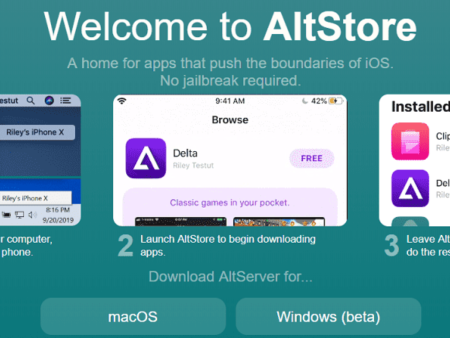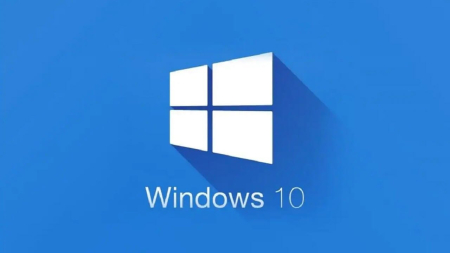The Guide to Mobile App Features: Must-Haves for a Successful App
-
16/03/2023
-
967
-
0
- 1. User Registration and Authentication
- 2. Intuitive User Interface and Navigation of Mobile App Features
- 3. Push Notifications and Alerts of Mobile App Features
- 4. In-App Purchases and Payment Integration of Mobile Apps Features
- 5. Social Media Integration and Sharing
- 6. Analytics and User Feedback
- Conclusion
Mobile app features are critical components that can make or break an app's success. In this guide, we'll explore the essential features that every successful app should have to provide a seamless user experience.
Related posts
How To Rate An App On Google Play And Apple App Store In 2023
How to increase app reviews and app ratings for Android or iOS apps free
1. User Registration and Authentication
User registration and authentication are essential features for mobile apps; that require users to create an account to access personalized content or functionality. Registration allows users to create an account by providing their personal information; such as their name, email address, and password. On the other hand; authentication verifies that users are who they claim to be and grants them access to the app's content.
To ensure a smooth and seamless registration process; it's essential to keep the process as simple and straightforward as possible. The registration form should only ask for necessary information; and users should be able to complete it quickly. Additionally, apps should consider providing alternative registration methods, such as social media account integration or single sign-on, to make the process even more convenient for users.

User Registration and Authentication, Source: Asoservice.com
When it comes to authentication, mobile app developers should prioritize security to ensure that only authorized users can access the app's content and functionality. Best practices include implementing secure authentication methods; such as two-factor authentication or biometric authentication, and regularly reviewing and updating security protocols to address any vulnerabilities.
In summary, user registration and authentication are essential features for mobile apps, as they provide users with personalized content and functionality while ensuring that the app's content remains secure. By prioritizing a simplified registration process and implementing secure authentication methods, developers can enhance the user experience and increase keyword app installs.
2. Intuitive User Interface and Navigation of Mobile App Features
Intuitive user interface (UI) and navigation are key factors in creating an exceptional user experience (UX) for mobile app users. The UI should be visually appealing, with clear and concise language and easy-to-understand instructions. Navigation should be straightforward and intuitive, allowing users to easily access the app's features and functions.
A well-designed UI and navigation can help increase user engagement and retention and ultimately lead to the success of the app. To achieve this, it is important to conduct user research, perform user testing, and continuously iterate and improve the UI and navigation based on feedback and data analysis.
The UI should be designed in such a way that users can easily understand the purpose of the app, its features, and how to use them. Users should be able to navigate the app with ease and find what they are looking for quickly. The navigation should be simple and clear, with easy-to-use buttons and menus.
Overall, an intuitive UI and navigation are essential for the success of any mobile app. By prioritizing user experience and continuously improving the design based on user feedback, mobile app developers can create an app that users will love and keep coming back to. You can read how to increase App installs from Google ads for more details.
3. Push Notifications and Alerts of Mobile App Features
Push Notifications and Alerts are essential features of mobile apps that keep users engaged and informed. With the right strategy, push notifications can be a powerful tool to increase user engagement, retention, and revenue. However, it's important to use them thoughtfully to avoid overwhelming users with irrelevant or intrusive notifications.
To ensure push notifications and alerts are effective, they should be personalized, timely, and actionable. Users should be given the option to opt in or out of notifications and to customize their preferences. Notifications should also be contextually relevant and provide value to the user, such as reminders, updates, or special offers.
Mobile app designers should also consider the timing and frequency of push notifications. Sending too many notifications can be annoying and lead to users turning off notifications altogether. On the other hand, not sending enough notifications can result in users forgetting about the app altogether.
In addition, to push notifications, app designers should also consider implementing in-app alerts. These can be triggered by user actions, such as completing a task or receiving a message. In-app alerts are a great way to provide users with real-time information and feedback without interrupting their experience.
Overall, push notifications and alerts are an important feature of mobile apps, but it's important to use them thoughtfully and strategically to ensure they enhance the user experience rather than detract from it.
4. In-App Purchases and Payment Integration of Mobile Apps Features
In-App Purchases and Payment Integration are important features of mobile apps that allow users to purchase digital or physical goods within the app. These features are essential for businesses that offer products or services through their mobile apps, such as e-commerce or subscription-based apps.
In-app purchases allow users to buy virtual goods, such as in-game currency or premium features, directly from the app. Payment integration, on the other hand, enables users to pay for physical goods or services, such as food delivery or ride-sharing services, within the app.
To implement in-app purchases and payment integration, developers need to integrate a payment gateway such as Apple Pay, Google Ratings, or PayPal and ensure that the process is secure and user-friendly. It's also important to provide users with multiple payment options to enhance their experience and reduce cart abandonment rates.
In conclusion, in-app purchases and payment integration are crucial features that can significantly boost revenue for businesses with mobile apps. Developers must ensure that the process is secure and user-friendly to provide users with a seamless experience.
5. Social Media Integration and Sharing
Social media integration and sharing are important features for any mobile app that wants to increase user engagement and promote user-generated content. With the rise of social media platforms, users expect to be able to share their experiences with friends and followers seamlessly.
Here are some key points to consider when integrating social media into your app:
Choose the right platforms: Determine which social media platforms your target audience uses the most and focus on integrating those into your app.
Make it easy to share: Ensure that sharing within your app is quick and easy. Consider adding share buttons to relevant areas of your app and enabling users to share directly from their profile or activity feed.
Encourage user-generated content: Encourage users to share their experiences with your app by integrating social media features that allow them to share screenshots, photos, or videos of their app usage.
Leverage social media marketing: Use your app's social media integration to market your app by sharing updates, promotions, and news with your followers on various social media platforms.
Overall, social media integration and sharing can help increase user engagement, promote user-generated content, and enhance the overall user experience of your mobile app.
6. Analytics and User Feedback
Analytics and User Feedback are crucial components of any successful mobile app.
Analytics tools can provide developers with data on how users are engaging with the app, including how often they use it, which features are the most popular, and where users are dropping off. This data can help developers make informed decisions about future updates and improvements to the app.
User feedback is also important for understanding how users perceive the app and what changes they would like to see. This feedback can be collected through in-app surveys, app store reviews, or social media. Developers can use this feedback to identify and address any issues or pain points users are experiencing and to prioritize future updates.
By using analytics and user feedback, developers can ensure that their mobile app meets the needs and expectations of their users, leading to increased user satisfaction and retention.
Conclusion
In conclusion, creating a mobile app with essential features is crucial for success. User registration, intuitive UI, push notifications, in-app purchases, social media integration, and analytics are key components.
Related posts
https://asoservice.com/increase-app-installs-from-google-ads
https://asoservice.com/app-installs-downloads
Thanks so much for reading this article.
Source: Buy ASO services




































Leave a Reply
Your e-mail address will not be published. Required fields are marked *